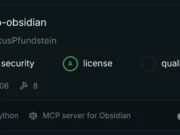Introduction
Connecting an email address to a real person can reveal valuable insights. With email-to-profile searches, social media lookups, and reverse search tools, you can uncover linked accounts, public posts, and verified identities. This process is common in cybersecurity, recruiting, and digital marketing. In this guide, we explore both free and professional techniques to map an email address to a complete online identity.
1. What Is an Email to Profile Search
An email-to-profile search links an address to a person’s digital presence. It helps identify legitimate users, verify business contacts, or detect fraudulent activity. These searches rely on both public records and social network data.
Popular email-to-profile tools include:
- RocketReach – Finds verified LinkedIn, Twitter, and company profiles.
- SignalHire – Extracts social and professional details directly from email inputs.
- Clearbit Connect – Integrates with Gmail and Outlook to show verified profiles.
- FindThatLead – Combines email finding with profile discovery.
- PeopleLooker – Provides a mix of public records and online account data.
2. Social Networks: Finding Users via Email
Social platforms are often the best starting point for linking an email to a profile:
- LinkedIn: Upload contact lists or use the search feature to identify users.
- Facebook: Enter the email into the search field; results depend on privacy settings.
- Instagram and X (Twitter): Use recovery and suggestion systems to confirm user existence.
- GitHub and Gravatar: Developers often register accounts with visible email hashes.
Advanced users can also employ tools such as Sherlock or Social Analyzer, open-source programs that scan hundreds of social networks for usernames or accounts tied to an email.
3. Reverse Email and OSINT-Based Research
Beyond simple lookups, OSINT (Open Source Intelligence) methods can unmask detailed data about an email’s owner:
- theHarvester – Extracts emails from domains, search engines, and public sources.
- Maltego CE – Creates visual link maps of connections between emails, domains, and usernames.
- Holehe – Checks if an email is registered on popular websites.
- EmailRep.io – Evaluates email reputation and trust score.
- HaveIBeenPwned – Identifies whether an email was involved in a breach.
Combining these tools gives a clearer view of the digital footprint of an address.
4. Maximizing Free Email Lookup Resources
You can achieve professional-level results even with free tools.
Recommended workflow:
- Start with Google Search using
“email@example.com”. - Use Hunter.io or VoilaNorbert for validation.
- Perform a reverse lookup with Social Catfish or Pipl.
- Run Holehe and EmailRep.io for security insights.
- Verify identities through LinkedIn, Twitter, and Gravatar.
To automate, advanced users can use APIs or scripts that query multiple sources simultaneously.
5. Security and Ethical Considerations
Always use lookup and OSINT tools ethically:
- Do not attempt to access private data or restricted networks.
- Respect privacy laws such as GDPR and CCPA.
- Use findings only for verification, research, or business purposes.
Conclusion
Email-to-profile search techniques are powerful tools for identifying online identities, enhancing cybersecurity, and building trusted connections. By using both free lookup tools and OSINT-based resources such as theHarvester, Maltego, and Clearbit, you can accurately map an email to social profiles and public data. Mastering these techniques transforms a simple email address into a full online profile analysis.














.webp)

